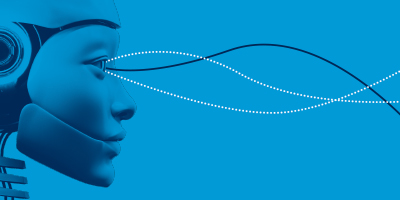Future-fit organisations actively sense and respond to disruptions and anticipate change, but that requires a rigorous and deliberate approach to scouting for trends. Gartner segments key trends and disruptions into seven major categories, so you can begin to build planning assumptions most relevant for your strategic plans.
A recent Gartner survey found that only 38% of organisations have a formal process for this type of trend spotting. “Most use an ad hoc approach,” says Marty Resnick, VP Analyst, Gartner. “This leads to a disjointed effort that risks not taking full advantage of the positive impact a formal trend spotting approach will have on overall strategic assumptions and planning.”
Download now: Put Your Strategy on a Page
A deliberate approach ensures that executive leaders consider trends and disruptions that exist outside of their core responsibilities, where emerging trends might be more familiar. For example, it prompts IT leaders to look beyond just impactful technology trends. Ignoring or devaluing non-technology trends will only result in gaps in the strategic planning process because your inputs are incomplete.
Some disruptions are more obvious than others, which is why trend spotting must be an ongoing, continuous discipline. “Often, there are inflection points and wild cards that shake up an industry,” says Resnick. “The sooner you spot these the better — and the more fit your organisation will become in the way it senses and responds.”
A “tapestry” of interconnected strategic assumptions
Frameworks exist to scope for environmental and macro trends (PEST, PESTLE, STEEPLE, to name a few), but Gartner weaves the seven key areas of disruptive change into a “tapestry” of trends — to reinforce the interconnected nature of the acronymised trend areas (TPESTRE).
The seven key areas are:
- Technological. The evolution, impact and disruption of technology change.
- Political. Attitudes, institutions and legislation shifting the political environment.
- Economic. Factors in the local and global economic environment that influence businesses and governments.
- Social/Cultural. Attitudes, behaviours and lifestyles of individuals and societal groups.
- Trust/Ethics. Ethical expectations, behaviours, duties and biases of people and companies toward one another and society.
- Regulatory/Legal. Changes in laws and governmental policies and regulations to reward or punish particular behaviours.
- Environmental. Technical, political, economic, cultural, ethical and legal changes supporting environmental protection and sustainability
Executives across functions and teams can use this TPESTRE construct to identify key trends, analyse their impact and build planning assumptions as they begin to map what actions might be needed in terms of business models, people/capabilities and IT systems.
Read more: The 5 Pillars of Strategy Execution
7 drivers of change in strategic assumptions
Gartner analysts regularly scope for key developments in each of the seven trends and their analysis in April 2021 highlighted three potential disruptions in each area. Analysts then plotted signals, planning assumptions, opportunities and risks that executives can build into both scenario planning and strategic planning.



